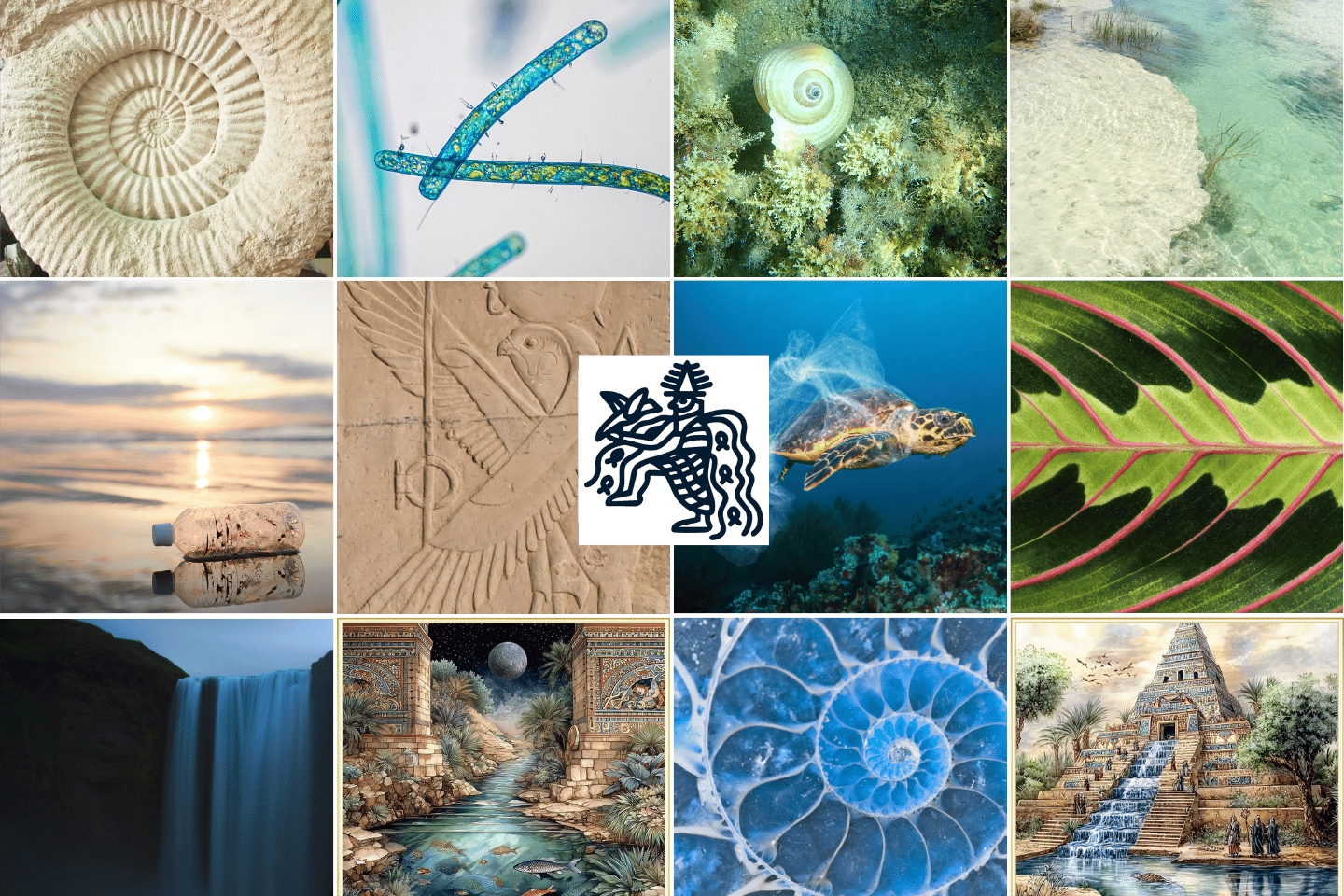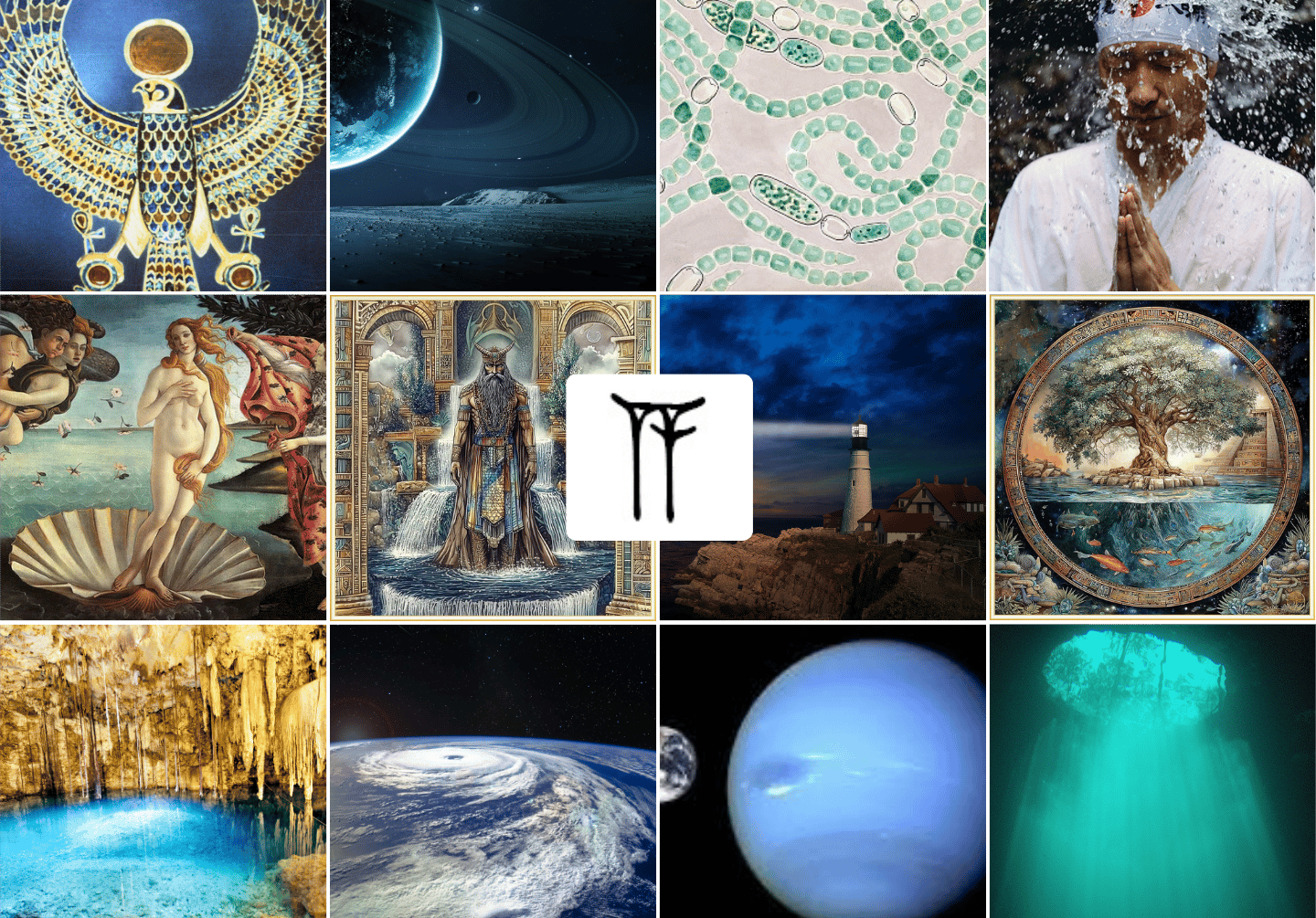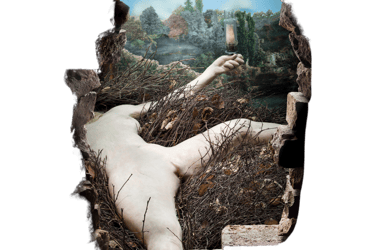Reasons for Étant Donnés: Available October 3, 2025
window.onpageshow = function() { window.scrollTo(0, 0); };
mystery of
I.i




I believe in water,
the sacred bond
of hydrogen
to oxygen
I believe in currents,
spreading fingers
over Alaska, Antarctica,
clawing for decades,
threatening
through her teeth,
I’ll return to you, whether
you say stop
or not.
Duchamp's 1st operation for assembly of the work outlines the instructions for creating the visual and mechanical effect of the waterfall, requiring the rotation of holes in the aluminum disk and the use of scotch tape (ground-glass kind) to filter the light.
The Rosary's 1st Luminous Mystery invites contemplation on the baptism, and from the water, the heavens open. (Matt 3:16-17).
To contemplate these divinities, contained within the poems of Reasons for Étant Donnés, The First Mystery of Light: Water, consider the below.




THE ORDER OF OPERATIONS
For the Manual of Instruction.
The following mythological and ritual terms detail the symbolic significance of water.
(1) Hover over an image to reveal the button.
(2) Click the button to read the poem snippet + the term.
Achilles
son of Thetis, warrior who fought numerous battles during the Trojan War, Achilles was made almost invincible when his mother dipped him in the River Styx, save for his heel, where she held him.
Appears in the introductory poem to the Water mysteries, pg. 3.
Thetis
Mother of Achilles, a Nereid loved by both Zeus and Poseidon. Nereids are the daughters of the sea god, descendants of the god of the water encircling the earth, Oceanus.
Appears in the introductory poem to the Water mysteries, pg. 3.
Horus
In ancient Egyptian religion, a god in the form of a falcon whose right eye was the sun or morning star, representing power and quintessence, and whose left eye was the moon or evening star, representing healing.
"...the Nile / Horus on Earth / mother Thetis dipped Achilles..."
Polypropylene
an inorganic polymer, polypropylene is a soft and flexible type of plastic commonly used for disposable items such as yogurt cups, ketchup bottles, and straws. Polymerization of propylene was first demonstrated in 1951, which led to the large-scale commercial production of every items using polypropylene. To recycle it, the material must be heated to 100 degrees Celsius in order to mold it into new plastic products. Cf. lignin; calcite.
VII.
What becomes,
of the dried out dunes
digesting plastic
in every gulp.
polypropylene
burps in bubbles
leaves a grime-stain
so soiled and so pitch
that even the trees
mock us
Zeitgeber
refers to environmental variables that are capable of acting as circadian time cues. The light/dark cycle is the most important zeitgeber, but other stimuli such as melatonin can also function as zeitgebers (German meaning “time-giver”).
IV.
Could I return to you,
beneath the reeds,
where you whisper
to the winds
sun is coming,
zeitgeber
Ammonite
(extinct) shelled cephalopods that died out sixty-six million years ago. The fossils are tightly wound flat spirals. The extinction of this group of ocean-dwelling creature is thought to have occurred at the same time as the demise of pterosaurs, when photosynthesis was nearly impossible.
IV.
my spine sets
carved as a crescent moon
kneeling in soft sands of washed
up gastropods, cuttlefish, ammonite,
prone—
and pleading to the goddess of the seas,
to please, please forgive before you invade
to reclaim your children, lost to land.
Gastropods
any member of more than 65,000 animal species, including slugs, snails, and conch, belonging to the class Gastropoda, the largest group in the phylum Mollusca. Gastropods are among the few groups of animals to have become successful in all three major habitats: the ocean, fresh waters, and land.
IV.
my spine sets
carved as a crescent moon
kneeling in soft sands of washed
up gastropods, cuttlefish, ammonite,
prone—
and pleading to the goddess of the seas,
to please, please forgive before you invade
to reclaim your children, lost to land.
Cyanobacteria
also referred to as blue-green algae, are a type of photosynthetic bacteria that naturally occur in freshwater ecosystems. The term “algae” merely refers to any aquatic organisms capable of photosynthesis. Spirulina is a cyanobacteria, a high-protein food source eaten regularly by the Aztecs.
I.
In the beginning,
before the water was
full of fish and
the feathered stars
fanned cyano bacteria,
hued-blue, as helium
and hydrogen turned
a tango with photons,
they called us—
the light eaters.
Aerobeacon
A searchlight-type light originally designed for use at airports and adapted for use in a number of lighthouses.
III.
[...]
that I start to feel hopeful,
that maybe I’ll sprout fins
and warn others
of their stomachs
full of plastic,
before the lighthouse’s
aerobeacon completes
her autopsy, begging me
to undress next.
Cenotes
natural pit, or sinkhole, resulting when the collapse of limestone bedrock, exposing groundwater. The name derives from a word used by the owland Yucatec Maya—tsʼonoʼot—to refer to any location with accessible groundwater.
"...the cenotes / natural sinkholes / as portals to the underworld..."
URANUS
the mate of Gaea (earth), who hated his children (the Mountains and the Sea) so much he hid them in his wife’s body. He was castrated by Cronus for his cowardice.
"...Aphrodite / born from seafoam / Uranus’ severed genitals / cast into / sacred / ocean waters ..."
MISOGI
a Japanese Shinto purification ritual that involves washing the body or immersing oneself in cold water. Shinto, or “the way of kami” (generally sacred or divine power, specifically the various gods or deities), came into use in order to distinguish indigenous Japanese beliefs from Buddhism.
ENKI
Sumerian god who resides in the ocean underneath the earth, called the abzu (Akkadian apsû; called Ea in Mesopotamian pantheon). Enki/Ea is the creator and protector of humanity in the Babylonian flood myth Atrahasīs and the Epic of Gilgameš. Enki instructed a human, Atrahasis to build an ark so that humanity could escape total destruction from a great flood.
"...Enki / god of Babylonians / born of fresh waters"
APHRODITE
Greek goddess of love, beauty, pleasure, and procreation.
"...Aphrodite / born from seafoam / Uranus’ severed genitals...""
APSU
in Mesopotamian mythology, Apsu is a primal deity made of sweet water beneath the earth. Tiamat, the salt waters, mingle their water together, creating the waters where the first gods came into being.
"...fresh waters / Apsu / the primordial sea"
AESTUARIUM
a part of the sea-coast extending inland which, during the flood-tide, is overflowed, but at the ebb-tide is left covered with mud or slime; and only filled with water at flood-tide; a creek, inlet.
IX.
I ask AI about the boiling point:
When does aestuarium become dynamic?
When will tides and rivers stop meeting?
When does the dense cold salt
at the surface flow seaward
so that the bay craves salt
and replaces it with salt
and more salt and
the heat of movement
spreads so fast that
I feel endangered
between my hips
a heaviness pulls
at stones passing
through intestinal
tubes and a river
of blood meets toilet
water becoming
the estuary.
RONDURES
Roundness; (also) a circle or round object. A borrowing from French. Etymon: French rondeur (1388 in Middle French), round object (1810)
II.
We were pathetic landlocked bodies
(rondures)
who always end at the beginning.
Ready-Made Poems
Exploring modernity through poetry and visual art.
Sara Cahill Marron Poetry Est. 2013
© 2025. All rights reserved.













